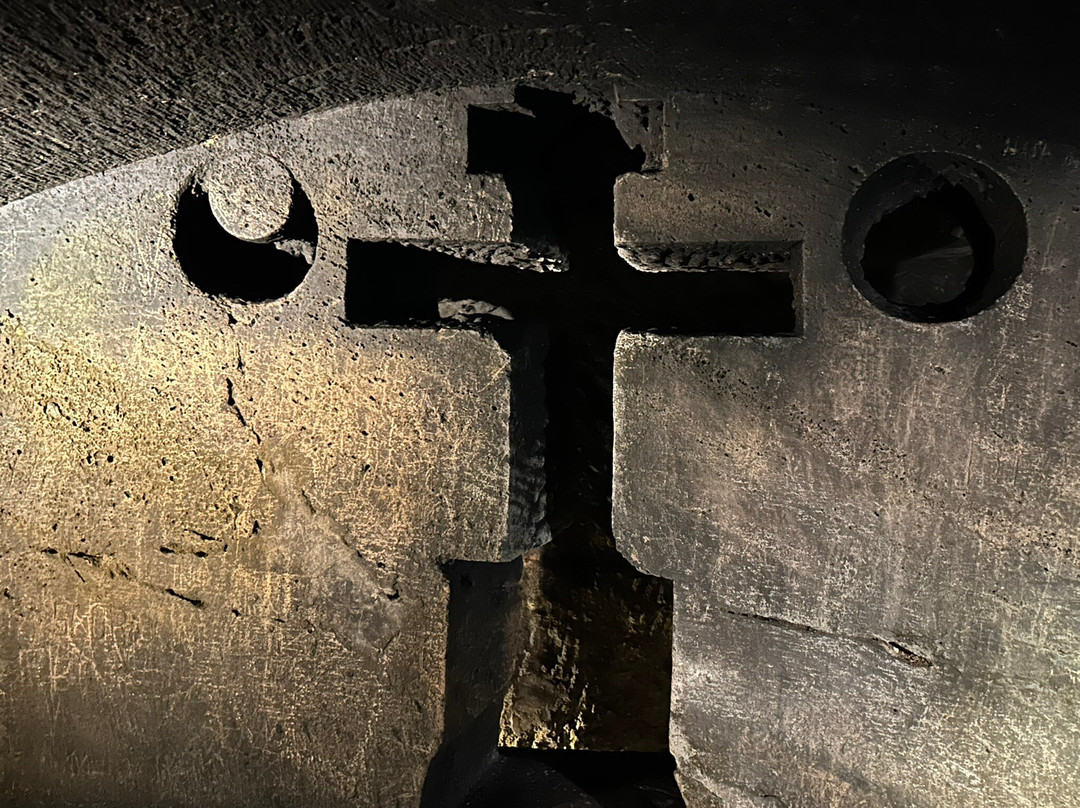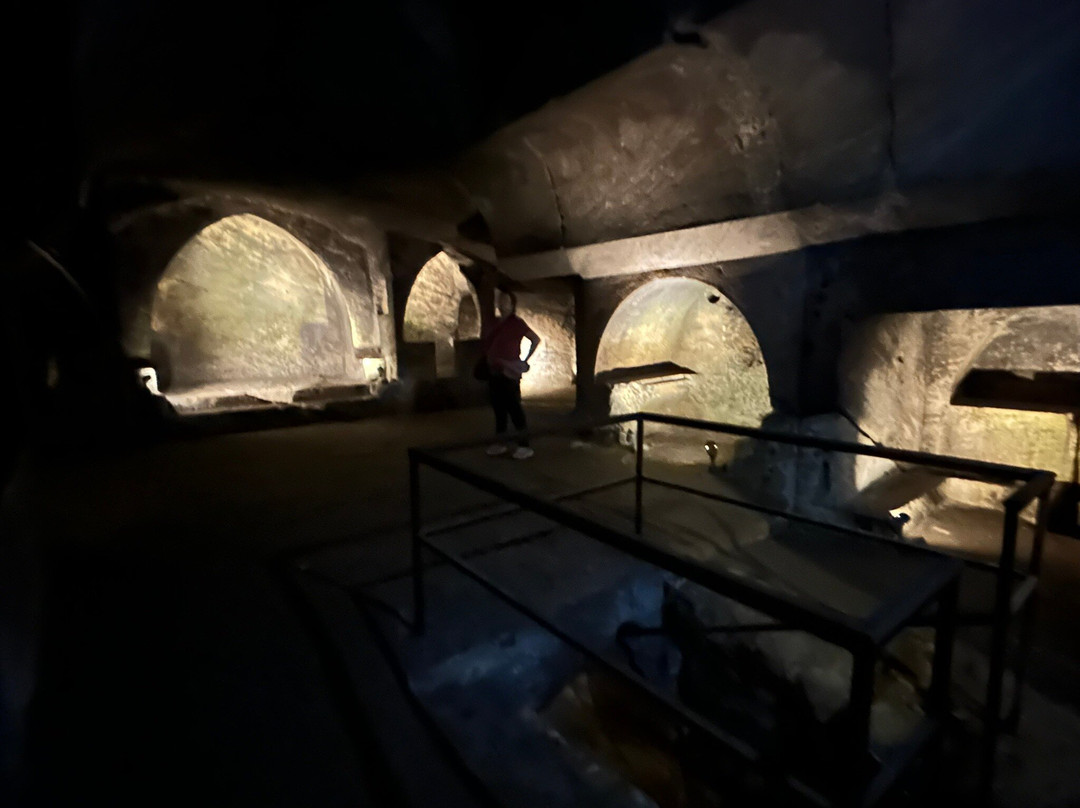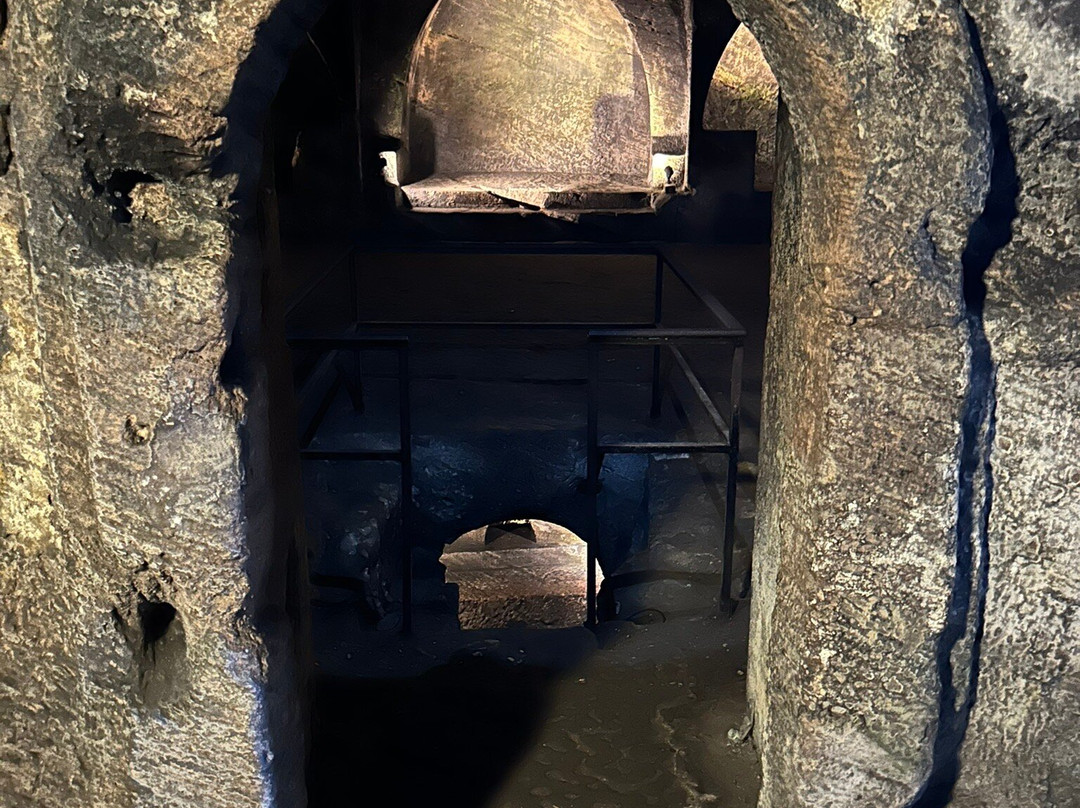的点评
An interesting piece of history.
Catacomb of Jajce的点评
点评:The Jajce Catacombs are not actually catacombs in the true sense of the word but are a large underground crypt and chapel. They were constructed in the early 1400s (over six hundred years ago) by the Grand Duke of Bosnia, Hrvoje Vukčić, (founder of the town of Jajce) as his family's burial site. However no-one was ever buried in the crypt.
During the times of the Austro-Hungarian Empire it was used for the storage of food, including one time as a beer cellar. During the second world war Tito and his staff took refugee here.
The catacombs are open from 9am to 4pm and there is a 4KM entry fee.
At the entrance you can see on the rock walls unfinished reliefs of Hrvoje and Hrvoje’s coat of arms, and a carved female figure with lilies in her hand. Alongside the sidewalls there are tombs in which no one is buried. There is a double cross carved in the church, and the sun and the crescent to the right and left of it, which are symbols representing death, the afterlife and eternal sleep.
During the times of the Austro-Hungarian Empire it was used for the storage of food, including one time as a beer cellar. During the second world war Tito and his staff took refugee here.
The catacombs are open from 9am to 4pm and there is a 4KM entry fee.
At the entrance you can see on the rock walls unfinished reliefs of Hrvoje and Hrvoje’s coat of arms, and a carved female figure with lilies in her hand. Alongside the sidewalls there are tombs in which no one is buried. There is a double cross carved in the church, and the sun and the crescent to the right and left of it, which are symbols representing death, the afterlife and eternal sleep.
翻译:亚伊采地下墓穴实际上并不是真正意义上的地下墓穴,而是一个大型地下墓穴和教堂。它们是波斯尼亚大公 Hrvoje Vukčić(亚伊采镇的创始人)于 1400 年代初期(六百多年前)建造的,作为其家族的墓地。然而,没有人被埋在地下室里。
在奥匈帝国时期,它被用来储存食物,包括一度被用作啤酒窖。第二次世界大战期间,铁托和他的幕僚在此避难。
地下墓穴开放时间为上午 9 点至下午 4 点,需支付 4 公里入场费。
在入口处,您可以看到岩壁上未完成的赫尔沃耶浮雕和赫尔沃耶的徽章,以及手握百合花的雕刻女性雕像。沿着侧壁有一些坟墓,里面没有埋葬任何人。教堂内雕刻着双十字架,左右两侧刻有太阳和新月,分别代表死亡、来世和永恒的睡眠。
在奥匈帝国时期,它被用来储存食物,包括一度被用作啤酒窖。第二次世界大战期间,铁托和他的幕僚在此避难。
地下墓穴开放时间为上午 9 点至下午 4 点,需支付 4 公里入场费。
在入口处,您可以看到岩壁上未完成的赫尔沃耶浮雕和赫尔沃耶的徽章,以及手握百合花的雕刻女性雕像。沿着侧壁有一些坟墓,里面没有埋葬任何人。教堂内雕刻着双十字架,左右两侧刻有太阳和新月,分别代表死亡、来世和永恒的睡眠。
旅行类型:情侣游



此点评仅代表旅行者个人的主观意见,并不代表TripAdvisor以及其合作方的意见。
关于我们
|
新闻动态
|
商务合作
|
会员中心
|
业主中心
|
业主通
|
常见问题
|
意见反馈
|
联系我们
|
营业执照
© 2025 Tripadvisor 版权所有。
使用条款 |隐私政策 |网站工作原理
部分照片由 VFM Leonardo 提供。
* Tripadvisor不是旅行社,也不是旅游预订服务代理商。我们提供免费、客观、公正的旅游资讯服务。 (显示更多)
TripAdvisor LLC 既不是预订代理商,也不是旅游运营商,不会向网站用户收取任何服务费。 按照规定,在 Tripadvisor 发布机票价格、游览和旅行套餐的合作伙伴(航空公司、旅行提供商及预订代理商),其标价须包含所有费用和附加费用。 例如, 机场出入境税费、消费税与其他服务费、手续费、杂费及附加费用。 当您向我们的某个合作伙伴进行预订时,请务必查阅他们的网站以了解当地行政部门要求的所有适用费用的具体情况。 除非另有说明,机票价格通常指的是一个人的价格(以人民币计)。
为方便起见,TripAdvisor LLC 根据从我们的预订合作伙伴获取的空房率计算每个酒店的均价。 对于游览和景点来说,所显示价格通常是每位成人的最低可用价格。 对于列出的任何旅行套餐或优惠,TripAdvisor LLC 无法保证任何特定的费率或价格。 此外,酒店均价每晚会更新,并以您的首选币种表示(使用现行汇率)。 由于这些已换算的价格是预估价格,因此,有关具体金额和币种请与预订网站进行核实。
此外,TripAdvisor LLC 无法保证我们网站上宣传的价格随时有效。 标价可能需要预订一定天数才能生效,或有不可用日期、使用条件或限制。
TripAdvisor公司对外部网站的内容一概不负责。优惠价格中不含税和其他费用。
ICP证:沪B2-20200433
沪ICP备20013175号
 沪公网安备31010502005427号
沪公网安备31010502005427号鹰程信息技术(上海)有限公司
货币/国家及地区
¥CNY
中国

